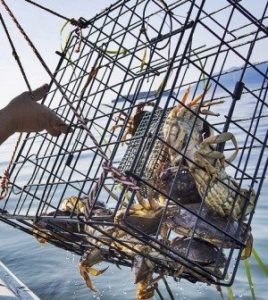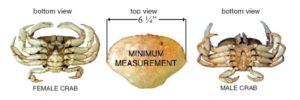Crabbing is one of Washington’s most popular activities. The Puget Sound is well known for fantastic Dungeness and red rock crab. One million pounds of crab are harvested every year using pots, ring nets, and even bare hands in the case of wade or dive fishermen. Crab can be caught from piers, but piers are often quite crowded during the season. Using a boat will allow access to the best crabbing waters in the Puget Sound.
CRAB GEAR
Each licensed fisherman may operate two units of gear. Each pot or ringnet must be attached to a line with its own buoy. Buoys must be half red and half white in color and legibly marked with the owner’s name and address.
Crab pot lines must be durable and either sink in saltwater or be weighted so that line does not float on the surface, which can entangle props and cause pot damage or loss. Whenever possible, mark your traps with GPS so they will be easy to recover. It is illegal to pull gear which has a buoy bearing someone else’s name. Also, setting or retrieving gear from a boat is illegal from one hour after sunset to one hour before sunrise. Carefree Boat Club has crab pots with all the gear you’ll need for a great day of crabbing available for complimentary use for our members.
BAIT
The best crab bait are fish carcasses, heads, clams and squid. Some people have been successful with dog and cat food in punctured cans, chicken and turkey entrails, or canned tuna fish. Place the bait in the trap so that crab must enter to feed.
UNDERSIZE CRAB
Crab must be measured and all undersized males, softshell crab and female Dungeness crab must be released back into the water immediately. The legal minimum size for male Dungeness crab in Puget Sound is 6-1/4 inches. Measure the distance inside the points on the shell. Do not measure to the tips of the points!
REPORT YOUR CATCH
All sport crabbers fishing in Puget Sound are required to report their Dungeness crab catch. You must record your Dungeness crab catch on your Catch Record Cards in ink before returning your trap into the water. Check off each Dungeness crab as it is kept. When done for the day, tally all the checkmarks on your CRC and record the total number of crab kept.
The new cards are separate from the multi-species card used for recording catches of salmon, halibut and other fish. People of all ages who have a crab endorsement and received a catch record card are required to make a report even if they did not go crabbing or catch any crab.
Sport crabbers can either report their information on the WDFW crab reporting website or mail in their Catch Record Cards. The website address for reporting crab catches is printed on the catch record card along with reporting deadlines.
TRANSPORTING, COOKING, CLEANING
Don’t submerge your caught crab in a bucket of seawater. They will use up all the available oxygen in the water and die. Cover them with seawater soaked towels and ice. Crab is best and safest to eat when cleaned before cooking. If you decide to clean your crab in the field, you must keep the shell to prove that the catch was of legal size.
Boil crab in salt water (3 to 5 ounces of salt per gallon). Cook for 12-15 minutes at a low boil. Remove from water and submerge them into cold water for 2 minutes to halt the cooking process. This also loosens the meat from the shell.
CRABBING WITH CAREFREE BOAT CLUB OF SEATTLE
Carefree boat club has the perfect boat for crabbing in Seattle out of Shilshole Bay marina – a Glacier Bay Coastal runner. This vessel has a large deck that gives you plenty of space to work your crab pots. And of course, members of Carefree Boat Club have complimentary use of all of our crabbing gear, we will help you learn the rules and our dock staff will show you where to find the crab! We have everything you need to have a great day of crabbing, all you need to bring is your shellfish license. For more information, visit our website.


